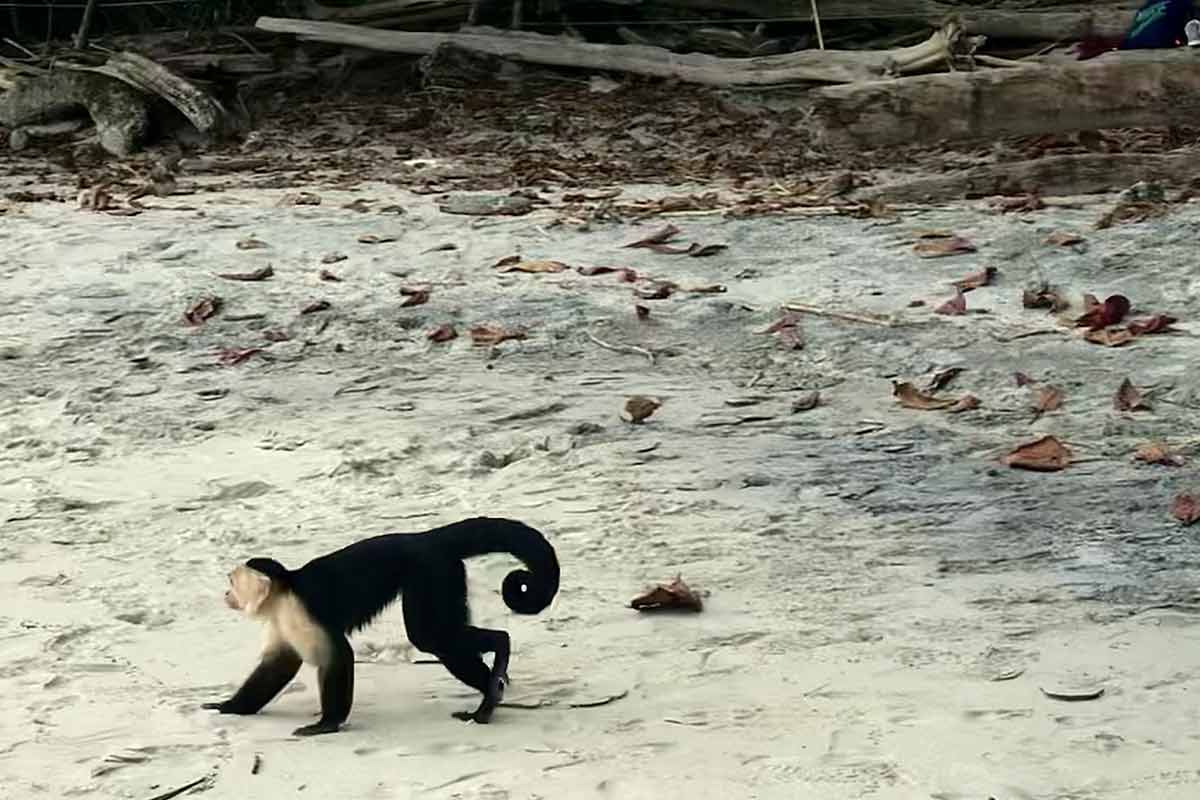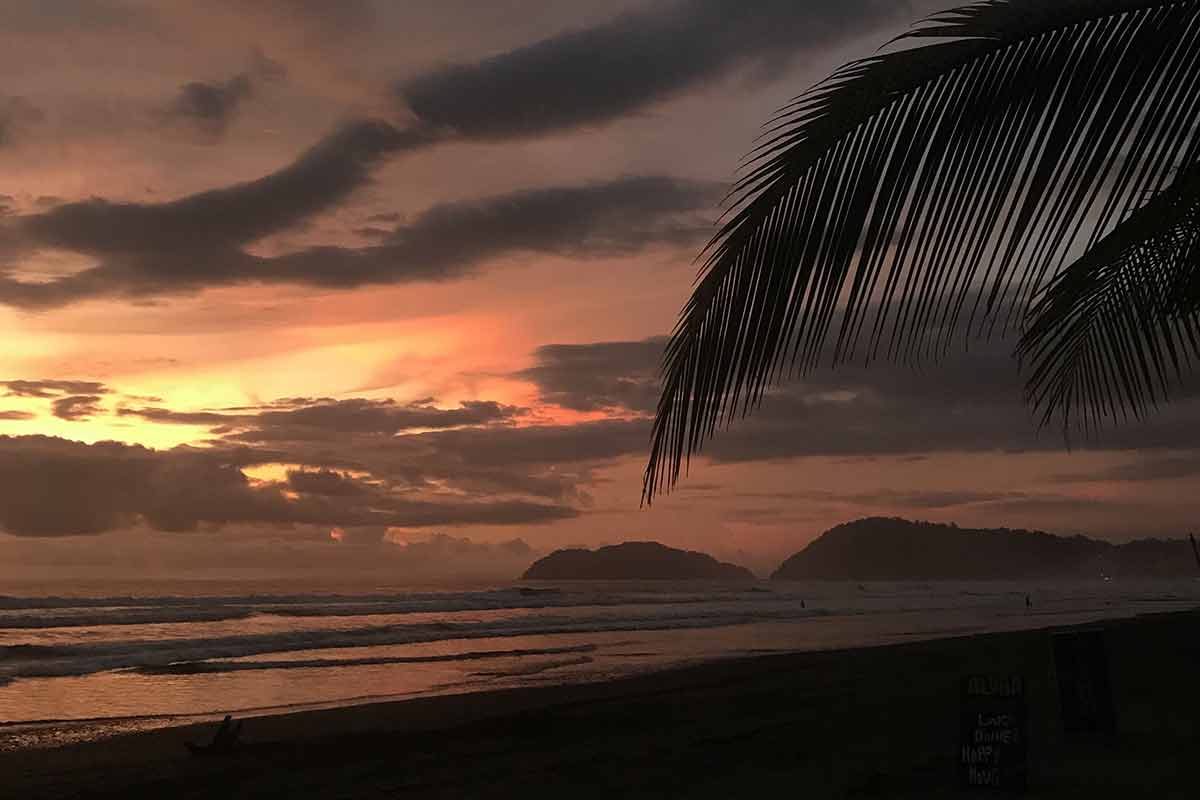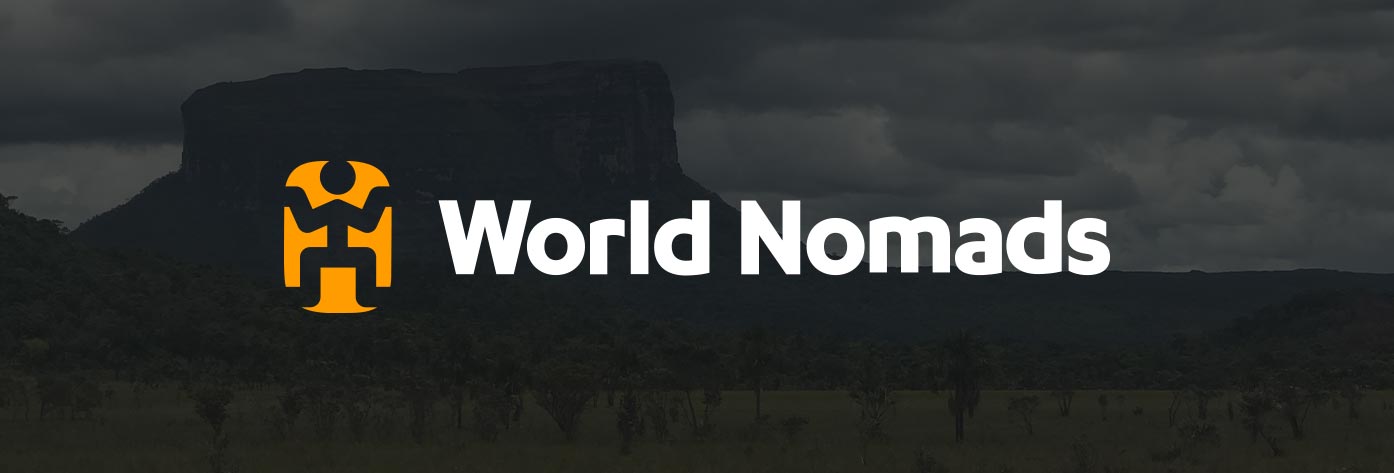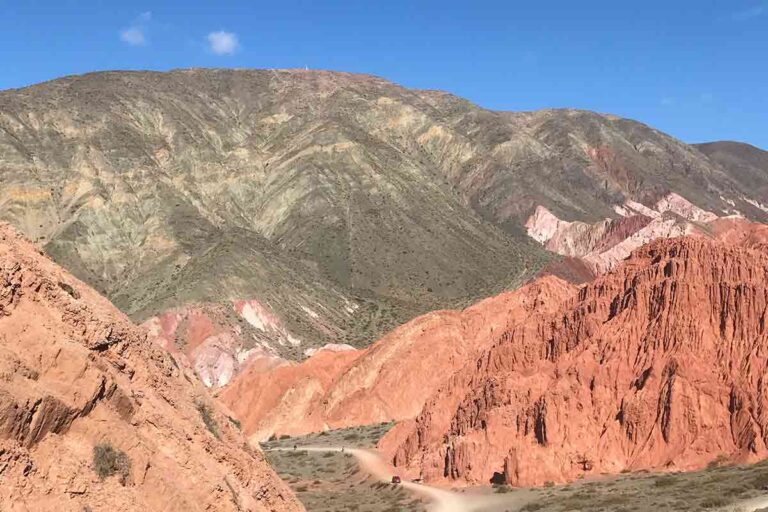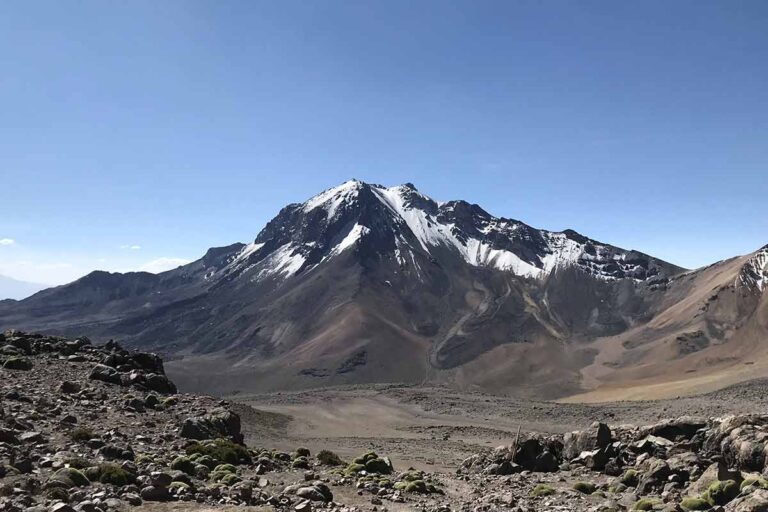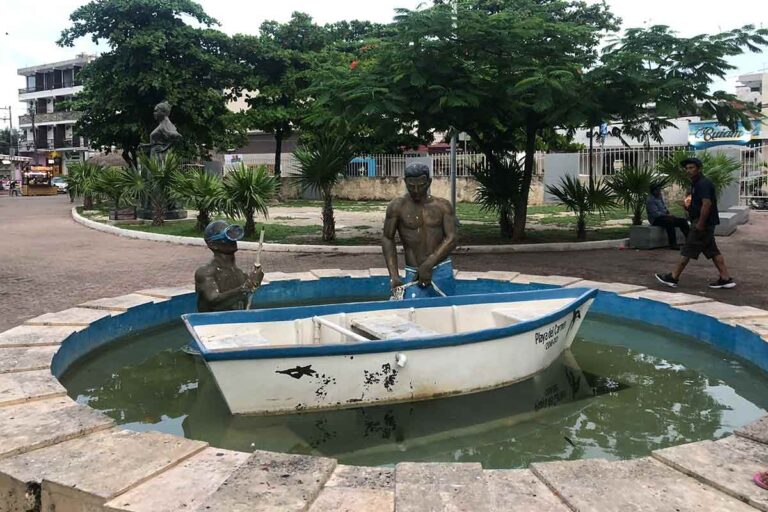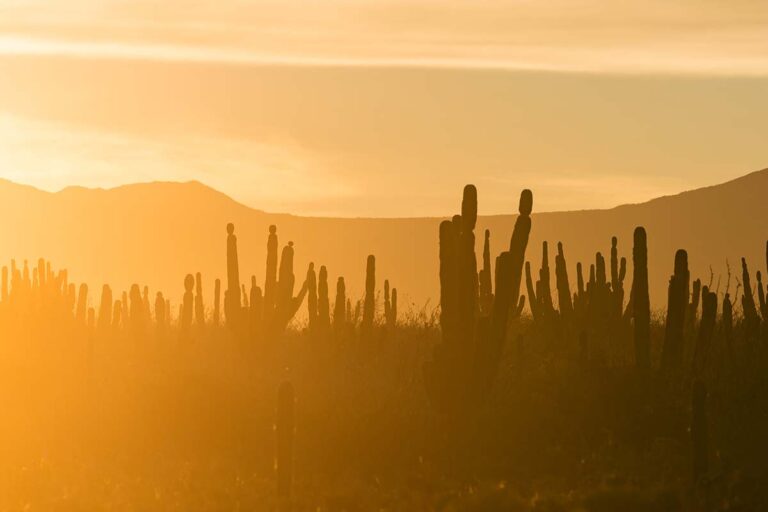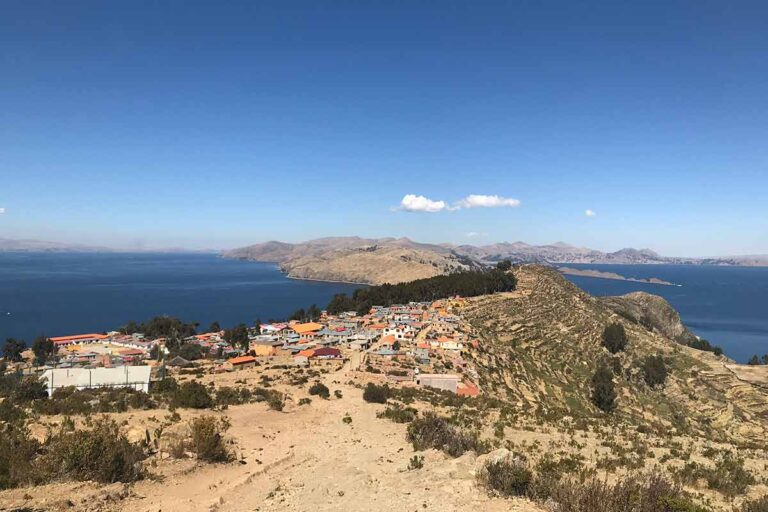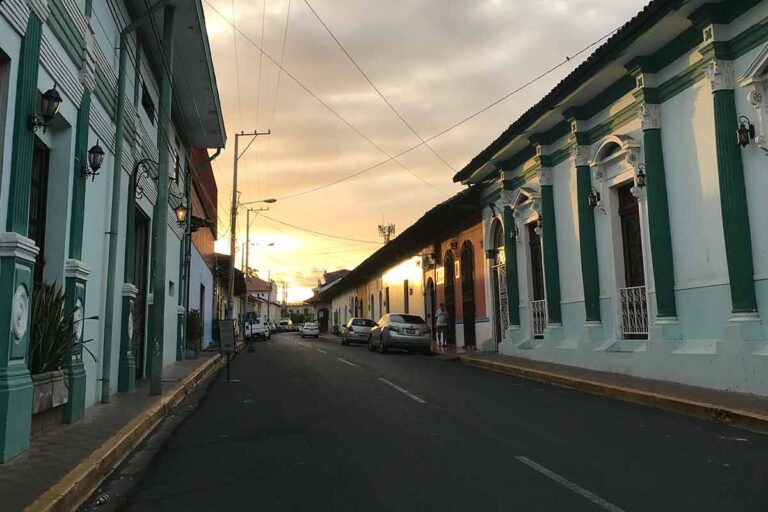Backpacking Costa Rica Itinerary
Welcome to our backpacking Costa Rica itinerary.
Costa Rica is a paradise and it’s a popular destination among nature lovers because it’s bursting with jungles, mountainous landscapes, picturesque beaches, volcanoes, and incredible wildlife.
There are so many things to do and so many places to visit, you are guaranteed to have a memorable trip.
Costa Rica Itinerary
In this backpacking itinerary, we will help you narrow down your options and make the most out of your time in Costa Rica.
Why visit Costa Rica?
One of the most developed countries in Latin America, Costa Rica is a paradise for wildlife lovers and sunset chasers alike.
As well as being one of the safest countries in the Central America region, this popular hotspot is also full of incredible scenery which ranges from fiery volcanoes and palm-fringed coasts to dense, lush jungle.
Is Costa Rica Safe?
Yes, it’s safe to visit Costa Rica. Of course, just like any other country, there are some precautions you need to take to make sure your trip is problem-free.
Our basic tips for safety in Costa Rica include:
- Be aware of your surroundings whenever you’re out and about.
- Always use authorized taxis.
- Don’t be flashy. Dress to blend in, leave couture and jewelry at home.
- Don’t flaunt your electronics and only bring the things you need.
- Never leave your things unattended in public spaces.
Central American countries are known for their struggles with crime and their many issues, but they can be a lot better and safer than you imagined.
If you are arriving in Costa Rica right after backpacking Nicaragua you’ll likely feel a little more open when it comes to safety, however, the key here is to keep your guard up at all times. Especially whilst in the capital of San Jose.
Safety facts about Costa Rica
- The best way to evaluate safety is by looking at the 2020 Global Peace Index. This measures the state of peace of each country in comparison with the rest of the World, by evaluating both tangible and qualitative indicators.
- Costa Rica ranked as 32nd out of the 163 nations measured, which is similar to that of Italy and Poland. For comparison, The United States ranked as 121st.
- As a whole, Costa Rica is one of the safest countries to backpack in Central America. However, car-jackings and theft are quite typical and especially in San José, so be extra aware when staying and travelling through the capital.
The good news is that traveling solo in Costa Rica is common, and in places such as Puerto Viejo you have a sense of community when it comes to safety.
Costa Rica Backpacking Itinerary
There are so many amazing places to visit in Costa Rica and today we are focusing on the top 6 spots you simply can’t miss.
Poás Volcano National Park
The Poás Volcano National Park is a beautiful place where you will be able to see an active volcano that’s located among thousands of acres of parkland.
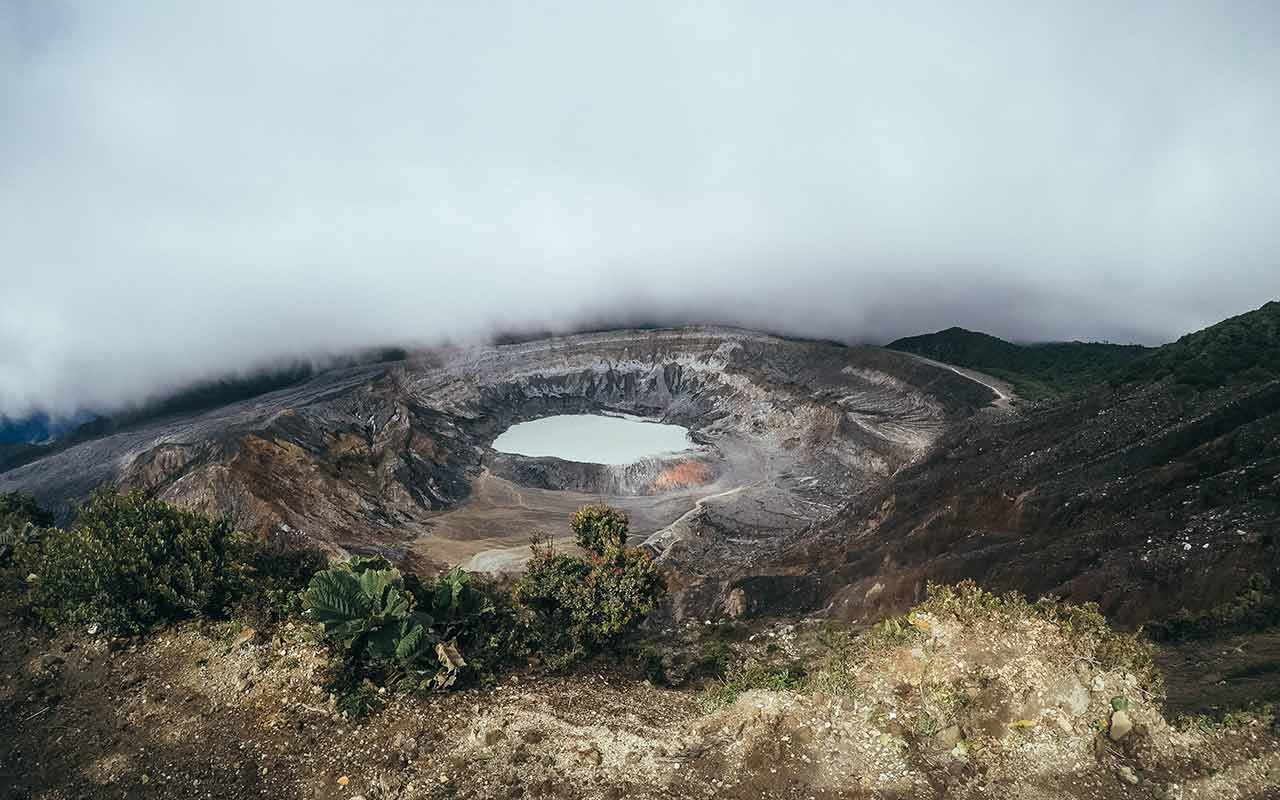
There are also many viewpoints that allow you to take in all the vegetation and the beauty of the volcano as well.
Poás Volcano is near other tourist spots in San José so make your visit worthwhile by taking a guided tour and exploring nearby spots such as the La Paz Waterfall Garden.
Puerto Viejo
Puerto Viejo is a popular destination among backpackers and young people who enjoy the party atmosphere and the amazing beaches.
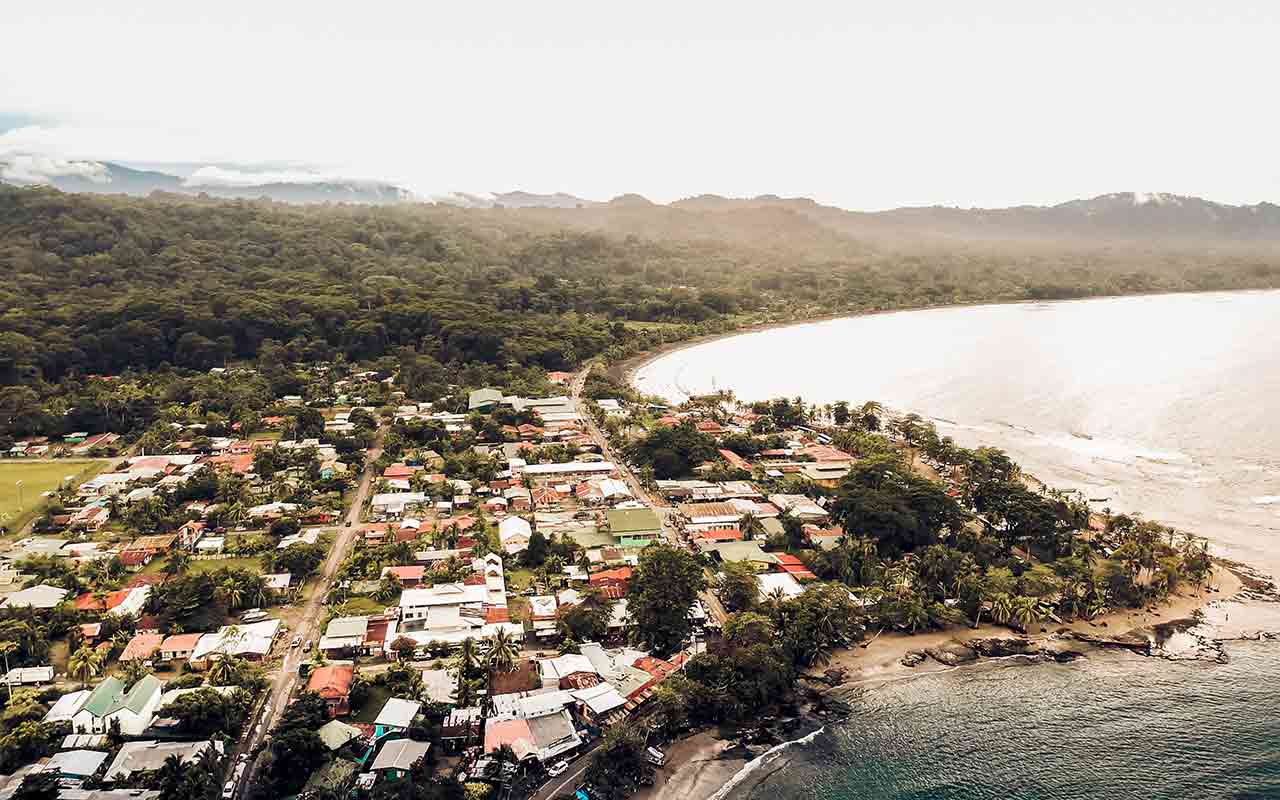
But if you want quiet, you’ll find many beach hotels that will provide that and still allow you to enjoy what this town has to offer, including the jaguar rescue center, which is a must-visit.
Another must (especially for those who love adrenaline activities) is to go White Water Rafting along the Pacuare River.
Tortuguero
Tortuguero is known for its picturesque beaches and the National Park spans over 77,000 acres, so there’s plenty to do here. A day tour with breakfast and lunch will surely suffice to see the diverse ecosystem of this national park.
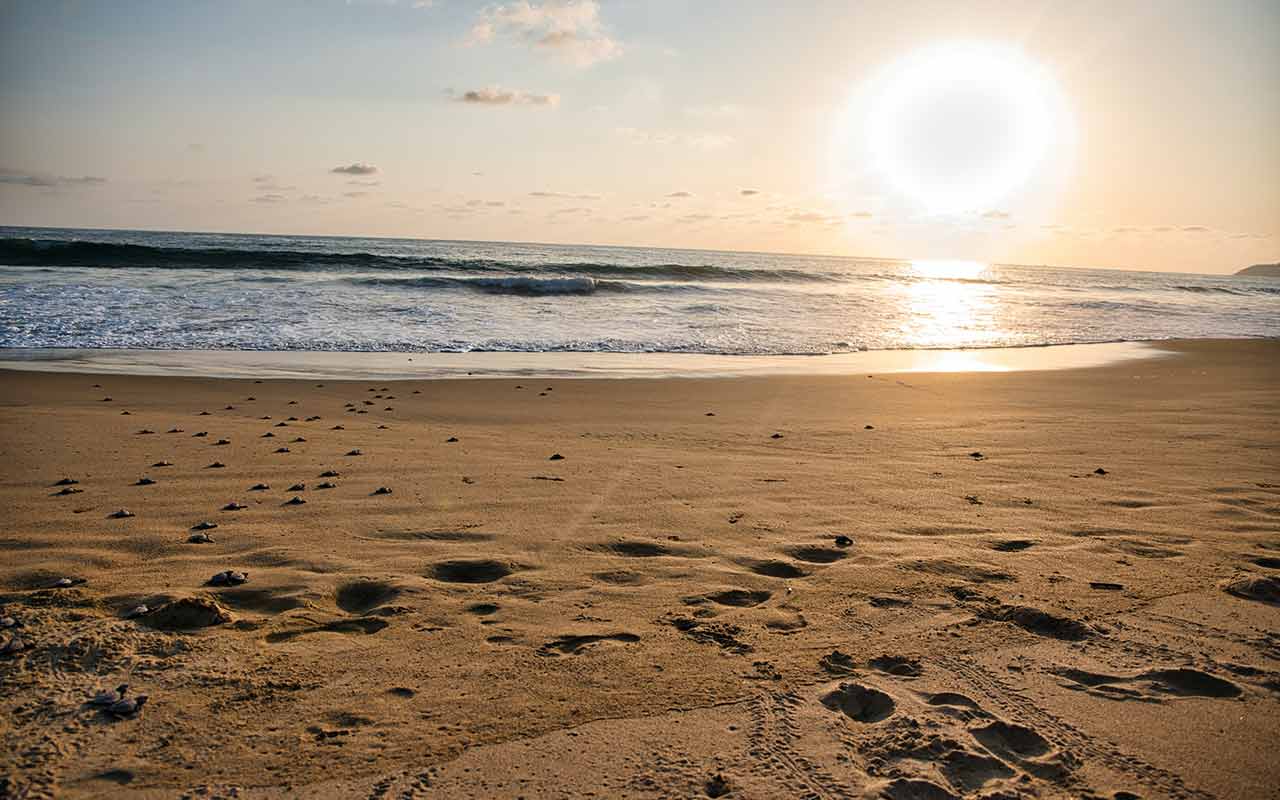
Of course, the most attractive thing about Tortuguero is turtles, as they lay their eggs and nest all along the shoreline. If you want to see that, schedule your trip in April and May.
But if you happen to go to Costa Rica in the off-season, Tortuguero still has a lot to offer. There are 11 different habitats in the park and you’ll be able to explore all of them.
Cocos Island
Cocos Island is the only eastern Pacific island that has a tropical forest and it’s just off the coast of the country, so it’s definitely worth a visit.
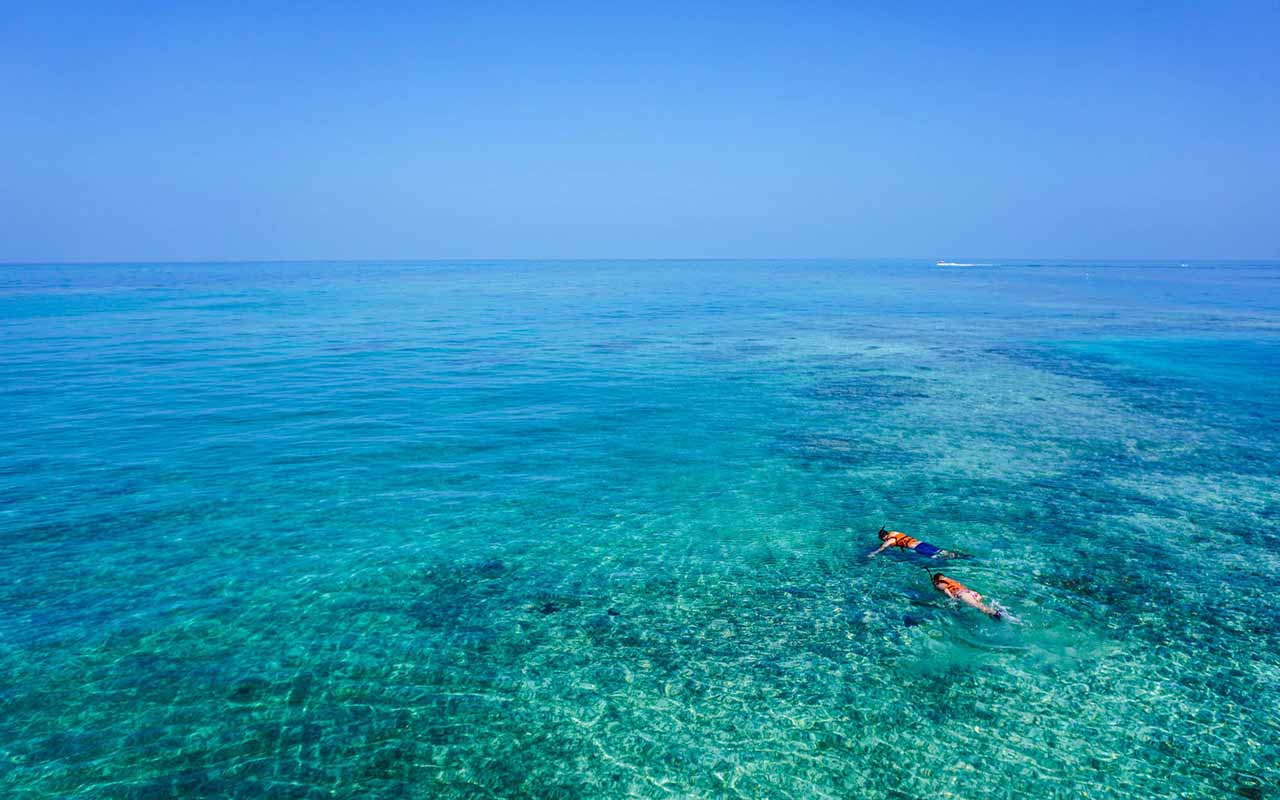
The island actually inspired the Jurassic Park franchise, which gives you an idea of just how beautiful it is.
Scuba divers love this place because there are 20 different dive sites to explore and come in touch with marine life.
However, no one can stay on the island, which is why the only way to visit is with a professional liveaboard dive boat.
Arenal
Arenal is one of the many volcanoes you’ll find in Costa Rica and it’s surrounded by jungles you can explore.
The volcano still erupts sometimes, so if you’re lucky on one of the many Arenal tours on offer you’ll be able to see some lava.
There are many great things to do in the area so a combination tour in Arenal is highly recommended.
Taking combination tours allow you to partake in all the must-try activities, including exploring the La Fortuna waterfall, caving, rafting, visiting hot springs, and exploring the national park that offers many great hiking trails.
Manuel Antonio National Park
Last but not least, we have the Manuel Antonio National Park, which features different natural habitats and is home to multiple endangered species, including the squirrel monkey.
You’ll be able to explore the jungle by hiking or simply relax on white-sand beaches such as La Playita or Playa Espadilla and explore the town to get a taste of the culture.
We recommend heading on this highly-rated adventure tour, where your expert guide will show you rare animals and even bring a professional camera for you to have the highest quality photos!
Backpacking Costa Rica (2 Weeks)
Here we’ll now cover our very best itinerary of Costa Rica.
As well as keeping an eye on time, it’s also been designed to keep things fresh and exciting too for you.
San José (Days 1-3)
First we’ll kick off this itinerary in the capital of Costa Rica. San José’s International Airport is very well connected, and makes sense to start our itinerary here.
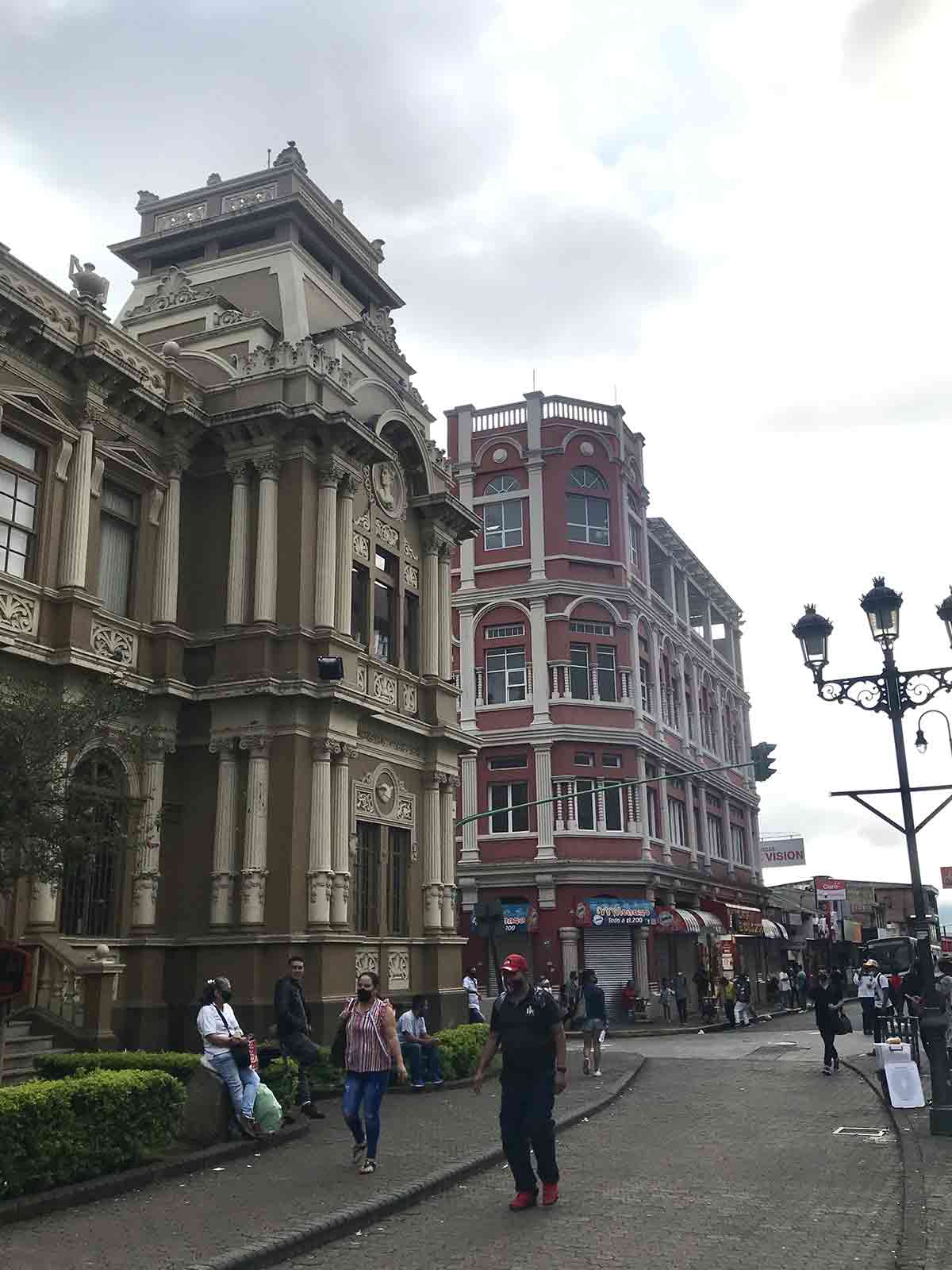
These first three days will be spent getting to know the “real Costa Rica”, as many other parts of the country have since become inundated with tourism.
One of the best things to do here is a visit to the Museo Nacional de Costa Rica, where you can learn about the country’s colourful past, visit the former prison and also see butterflies within the indoor gardens.
Other cool things to do here include a visit to the Pre-Colombian Gold Museum for its rich reserves of gold artefacts that were discovered all over the country, as well as heading into the wild nature of the Parque Nacional Braulio Carrillo. Be sure to try the National dish of Gallo Pinto here too!
This culture tour is the perfect way to explore San José, where you’ll see sites such as Morazán Park as well as Barrio Escalante. You’ll also have a dinner after (included), along with opportunities to try local Costa Rican beers.
Manuel Antonio National Park (Days 4-6)
We’ll now take the three hour bus to Manuel Antonio, which is home to some of the best beaches on the continent. We recommend staying within the town if possible, or nearby Quepos as a good second option.
Of course lounging on the perfect beaches are part of the itinerary here, so kick back and enjoy Costa Rica’s finest!
Whilst here you’ll want to spend a day within the National Park, where you can hike through the jungle, visit secluded beaches and see many exotic wildlife species such as Iguanas, Howler Monkeys, Sloths and Boa Constrictors.
Another incredible thing to do is to hike to Nauyaca Waterfalls, which are tucked away deep within the jungle. You can go with this organised tour, which includes lunch as well as all transport from your accommodation.
For fishing lovers, or to try it out, head to nearby Quepos, with the town having earned itself the title of the “Sailfish Captial of the World”. Here you can fish all sorts, ranging from Dorado and Marlin to oversized Tunas.
Monteverde (Days 7-8)
Now it’s time for some real jungle. Monteverde is known to have one of the most diverse ecosystems in the world, and is perfect for exploring a variety of fauna and flora. To get here you’ll first take a bus from Manuel Antonio to Jaco, and then another to Monteverde.
The first night you’ll want to head on an organised Night Jungle Tour of Monteverde. In a small group, you’ll carefully make your way around jungle trails looking out for very rare and exotic species.
Some of the animals we saw included Tarantulas, Snakes, Sloths and even an Ocelot. If you’re extremely lucky you may be able to spot a Jaguar.
Other cool things to do in Monteverde include a visit to the Cloud Forest and walking along the suspended hanging bridges, and getting your thrill on by heading to Skyadventures, which has a circuit of zip-lines and abseiling.
La Fortuna (Days 9-11)
From Monteverde we’ll now take the 5 hour bus to the town of La Fortuna, which is the gateway to the El Arenal National Park.
El Arenal is best known for its Jurassic style cone-volcano of the same name, that looks something out of a dinosaur film.
You can complete the hike in around 4 hours, where you can climb to the peak for some incredible views of the surrounding National Park. On your way back be sure to stop for a cool-off in Lake Arenal.
Another awesome thing to do in the region is to hike to the nearby Catarata Río Fortuna, with the hike to the waterfall taking around 20 minutes.
With a drop of 75 meters, it’s one of the biggest waterfalls in the country. You can also visit the Tabacon Hot Springs for a day of relaxing after all the hiking.
This adventure combo-tour is the perfect way to see all of these highlights, where you’ll also have a canopy walk along the hanging bridges included.
Puerto Viejo (Day 12-15)
Finally we’ll head to the Caribbean paradise town of Puerto Viejo. From Arenal you’ll need to take a bus back to San José, and then another heading south to Puerto Viejo (around 9 hours in total).
This laidback town is the perfect place to spend our last few days in Costa Rica. It’s pretty small, meaning you’ll feel part of the vibrant and welcoming community very quickly. Whilst it’s quite touristy nowadays, the nature and setting is still as good as it’s ever been.
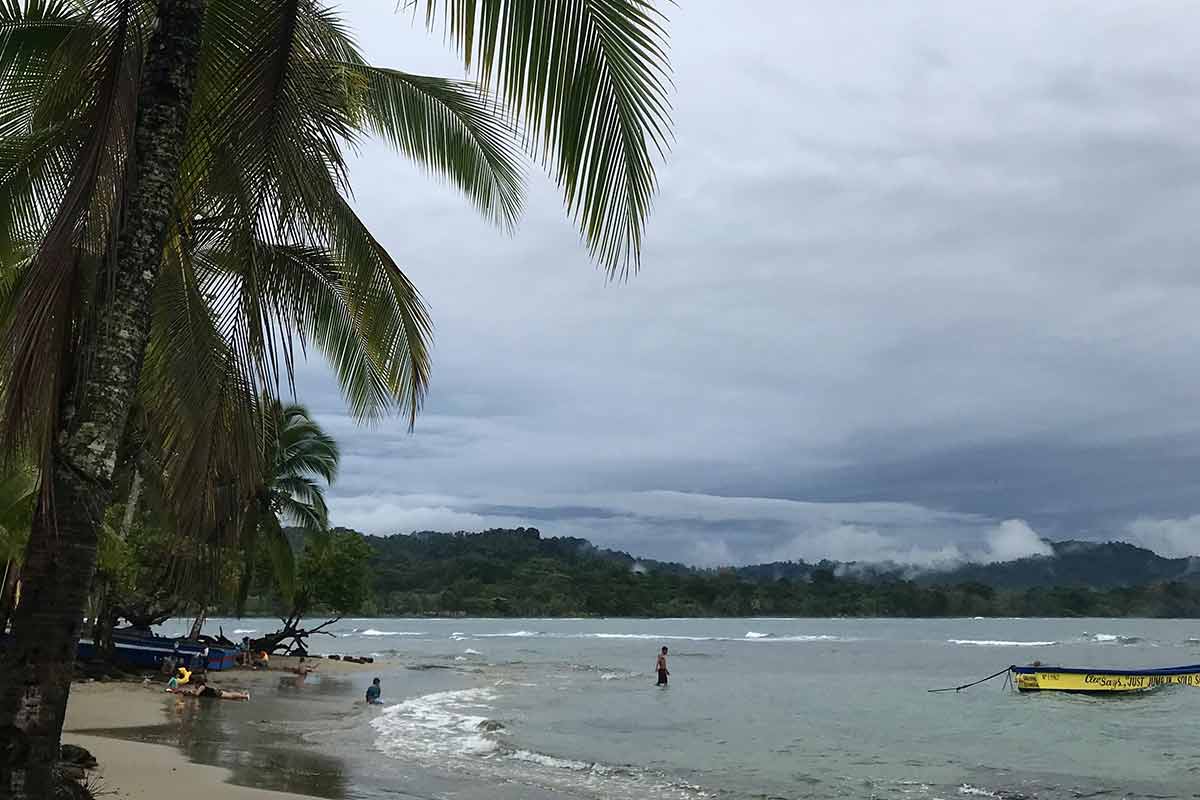
One of the best things to do here is to rent a bike and explore the nearby jungle and coastline, with Playa Punta Uva and Playa Negra some of the best beaches to visit within the region.
Another popular way to spend the time is to head to the Cahuita National Park, which has its own distinct vibe. Whilst in Puerto Viejo be sure to try out some of the local Caribbean cuisine, such as coconut-infused chicken and rice.
From here you can either take the bus back to San José for your international flight, or cross the border south into Panama to finish up your Central American adventure.
We also recommend heading to nearby Puerto Limon, and jump on this day tour where you’ll explore the very best wildlife and scenery of the Cahuita National Park.
And there we have our 2 week Costa Rica itinerary. Now let’s move on to our travel tips, so you can have the best experience possible.
Costa Rica Travel + Safety Tips
Costa Rica is a safe country to visit, but you still need to be cautious about certain things to avoid common risks and issues.
⬇️ These tips will help you out:
- Avoid any isolated areas, especially at night. Stick to the crowd so you can avoid being singled out by muggers.
- Monteverde Cloud Forest, Arenal Volcano, Caribbean Coast. See this list of top rated tours in Costa Rica.
- Whilst not as impressive as food in say Mexico or Brazil, Costa Rican food is still worth a try. Be sure to try out unique foods such as Patacones (plantains mashed, popular along the Caribbean coast) and Gallo Pinto; Costa Rica’s official national dish.
- Keep your valuables at home or the hotel safe. Be sure to take out travel insurance to protect you during your backpacking.
- Coastal towns such as Puerto Viejo and Jaco have a nice variety of beachside bars and venues, however the best night out is in San José. When in the capital, head to Castro’s Discotheque and Club Vertigo.
- Look out for the top rated hostels in Costa Rica for the most comfortable rooms and meeting like minded people etc.
- When you use public transportation, you need to be alert because petty theft is common.
- B sure to practice some Latin American Spanish before you arrive in Costa Rica as it can really help you out in different situations.
- Don’t make ATM withdrawals at night and use them inside when possible.
- Costa Rica is one of the most expensive countries in Latin America, so we recommend using public transport instead of taxis as well as preparing your own meals to save money!
Follow our tips and to reduce having issues during your trip. Safety is a matter of precaution and common sense, and that’s true for any country you visit.
Traveling Around Costa Rica
Traveling Costa Rica by bus is a great option because it’s inexpensive and buses are reliable.
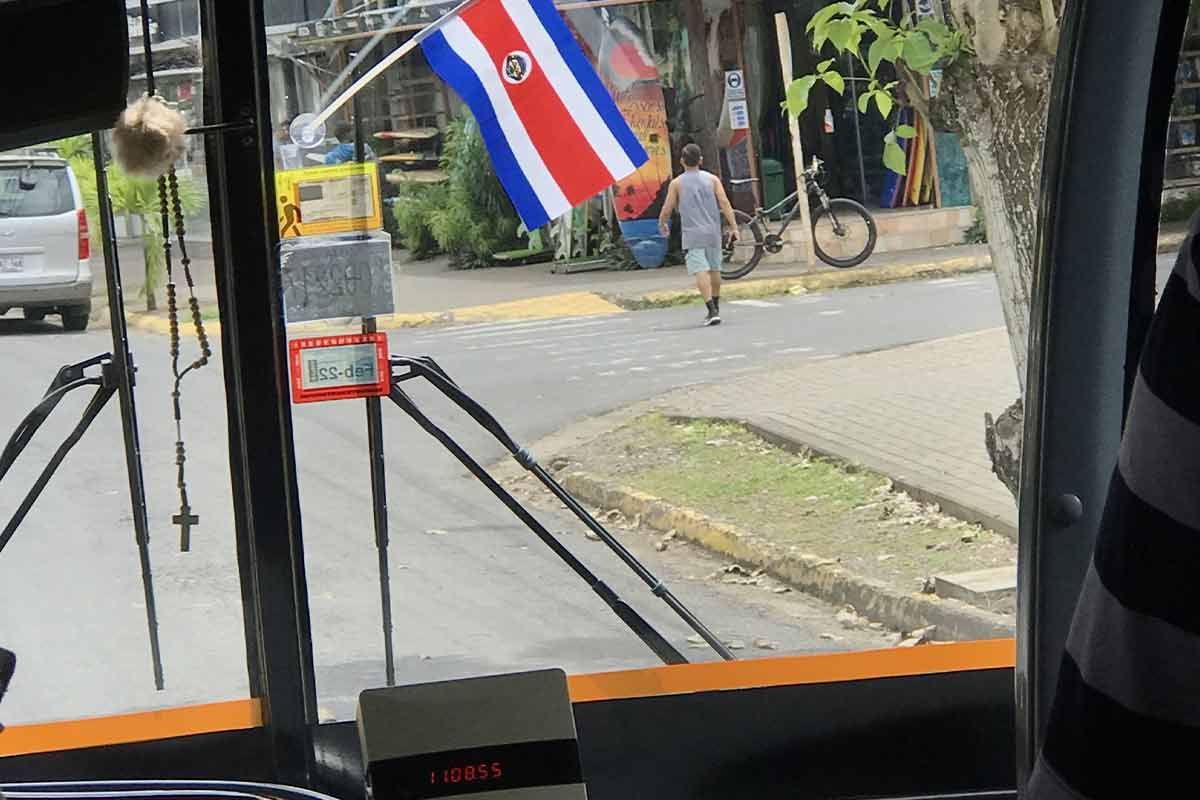
There are bus offices all over the country but not all bus companies have big terminals where you can purchase tickets in advance.
For this reason, it’s important to do your research and figure out how buses work where you’re going.
You’ll find two types of bus, the directo, which goes from point A to point B and makes a few stops along the way, and the colectivo, which makes a lot more stops, so it takes longer.
You want to confirm the time when you purchase your ticket because schedules can fluctuate a lot. Also, don’t keep your luggage in the overhead compartment.
It’s also a good idea to consider tourist-van shuttle services, which are a bit more expensive but they’re more comfortable.
Best Time to Visit Costa Rica
We’ve spoken a lot about the best time to visit Central America on this blog (George is absolutely obsessed with checking the weather when we travel).
The weather in Costa Rica can best be described as seasonal and tropical. Despite its relatively small size, different parts of the nation can experience wildly different weather at the same time.
December through April in the Caribbean will promise the driest weather. On the other hand, a trip to the Pacific Coast will have plenty of showers, with it being the wettest season to explore this region of Costa Rica.
More elevated areas such as Monteverde are usually cooler year-round as well. The overall best time to visit (if heading throughout Costa Rica) is between December and April.
Known as the dry season, the weather is much more predictable during this time of year and is likely that your travel plans won’t be affected.
What to pack for Costa Rica
Once you’ve decided where you want to visit, and roughly the time of year, now comes the fun part of packing for your backpacking trip to Costa Rica!
As you’ve seen, the climate can range quite a bit here from tropical beaches along the Caribbean to cooler mountain towns such as Monteverde.
As a result we recommend mostly packing light clothing for hot temperatures, such as T-shirts, shorts, vests, short dresses, a daypack (we use Osprey), and anything else you’ll feel comfortable wearing in and around 85°F.
We also recommend packing a light jumper and raincoat as well, as the weather can vary throughout the country (regardless of the time of year you’ll be visiting some areas can still get quite cool).
You’ll also want to pack necessary toiletries, document holders, hiking boots, towels, a water bottle as well as a backpack for any excursions you’ll be doing.
Some of our favourite hostels in Costa Rica include:
Hostel Shakti (San José), Pagalu Hostel (Puerto Viejo), Roca Verde (Monteverde).
Got travel insurance for Costa Rica?
Backpacking Costa Rica
Costa Rica has so much to offer, one trip will hardly be enough to discover all its wonders. However, this itinerary points you in the direction of some of the best highlights!
Make sure you refer back to it before and during your trip so you don’t miss anything good and have as much fun as possible.
Also, be sure to read this in conjunction with our popular backpacking Central America travel guide which shows you more place to see in Costa Rica.
👉🏽 P.S. If you’ve found this guide helpful, buy us a coffee here to say thanks! Or, support us by downloading our South America Travel Bible to get our best content.
“Dear traveler! Some links in this post contain affiliate links. Meaning, if you click through and make a purchase, book a hostel or sign up for a tour, we may earn a small commission at no additional cost to you. Your support means a lot and helps us to carry on traveling and maintaining the quality of this site for you.”

